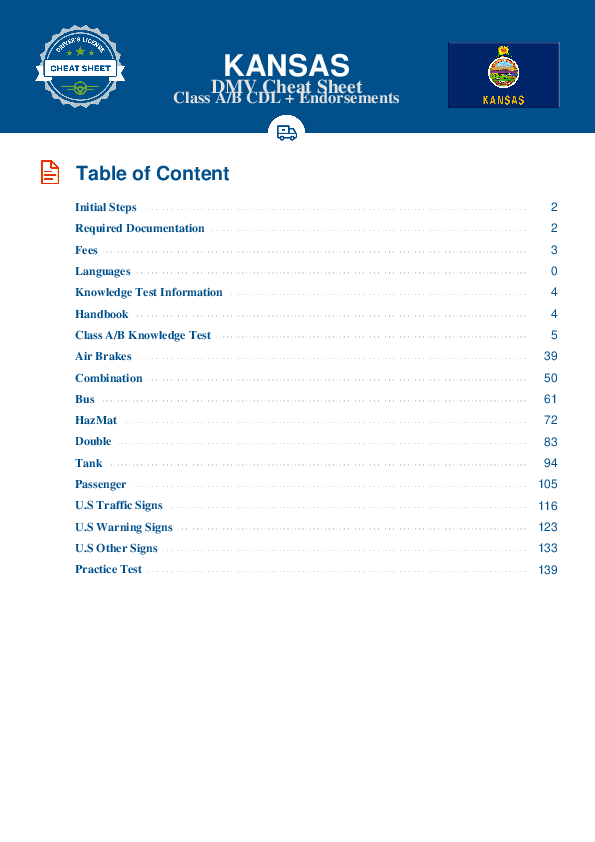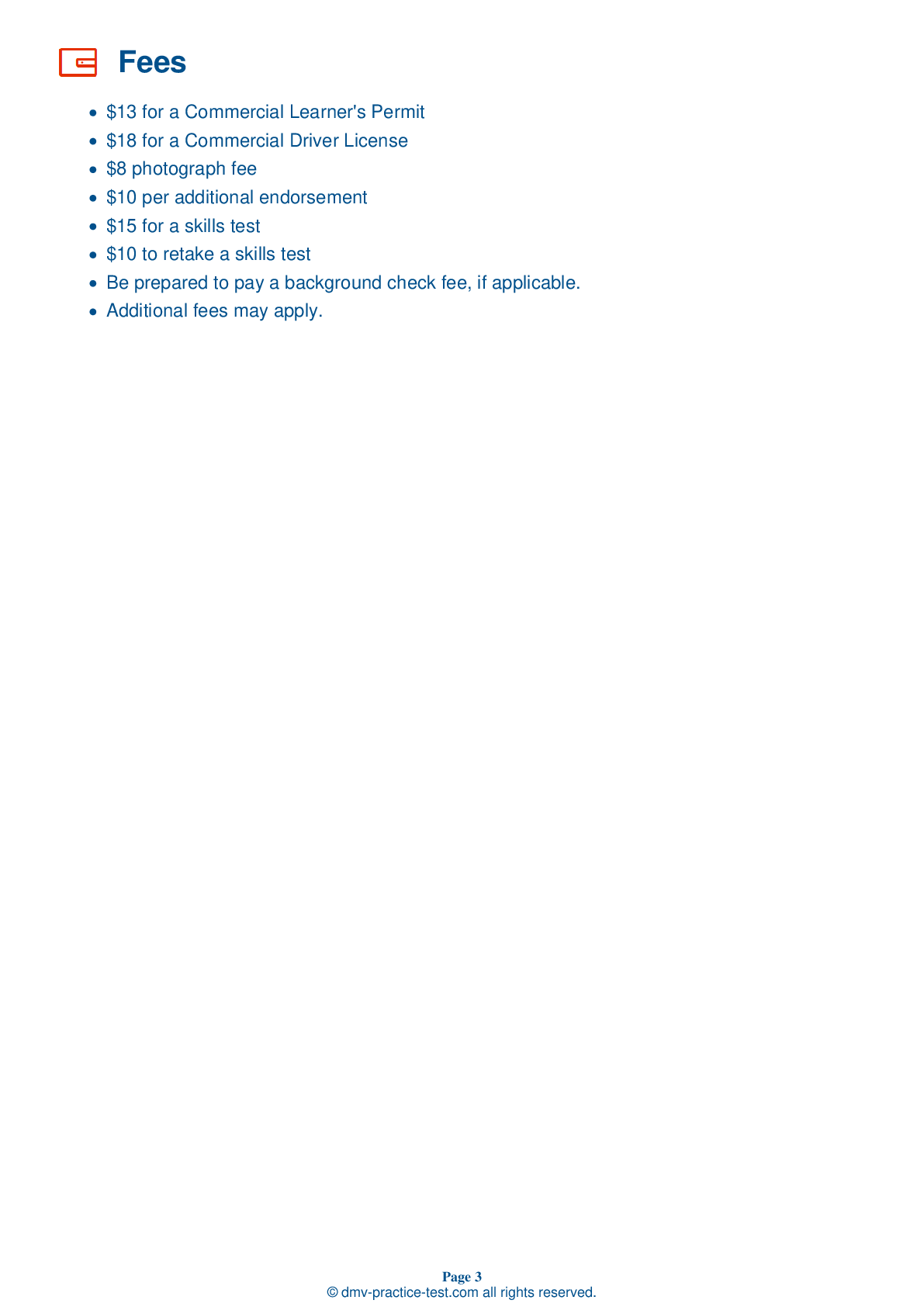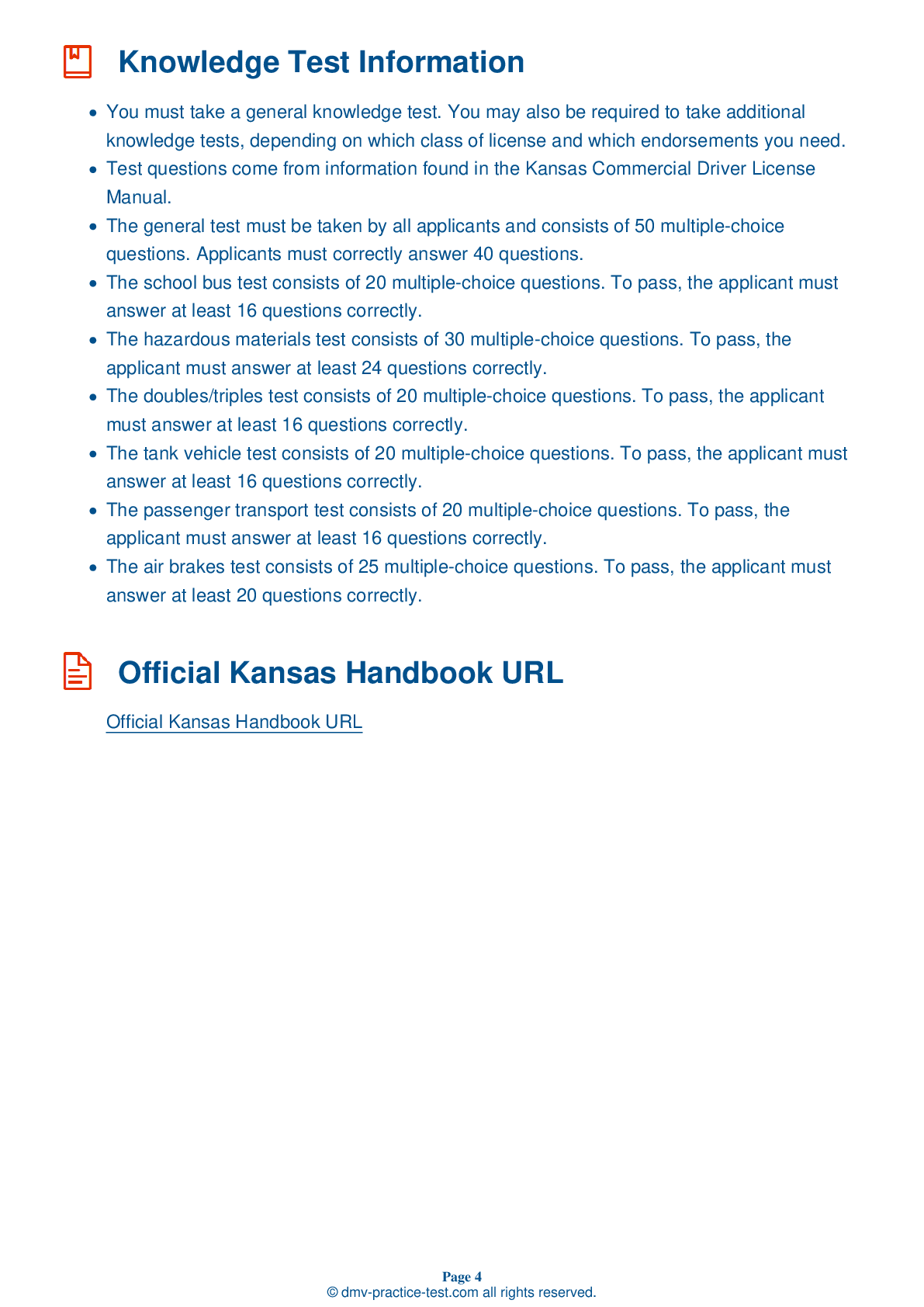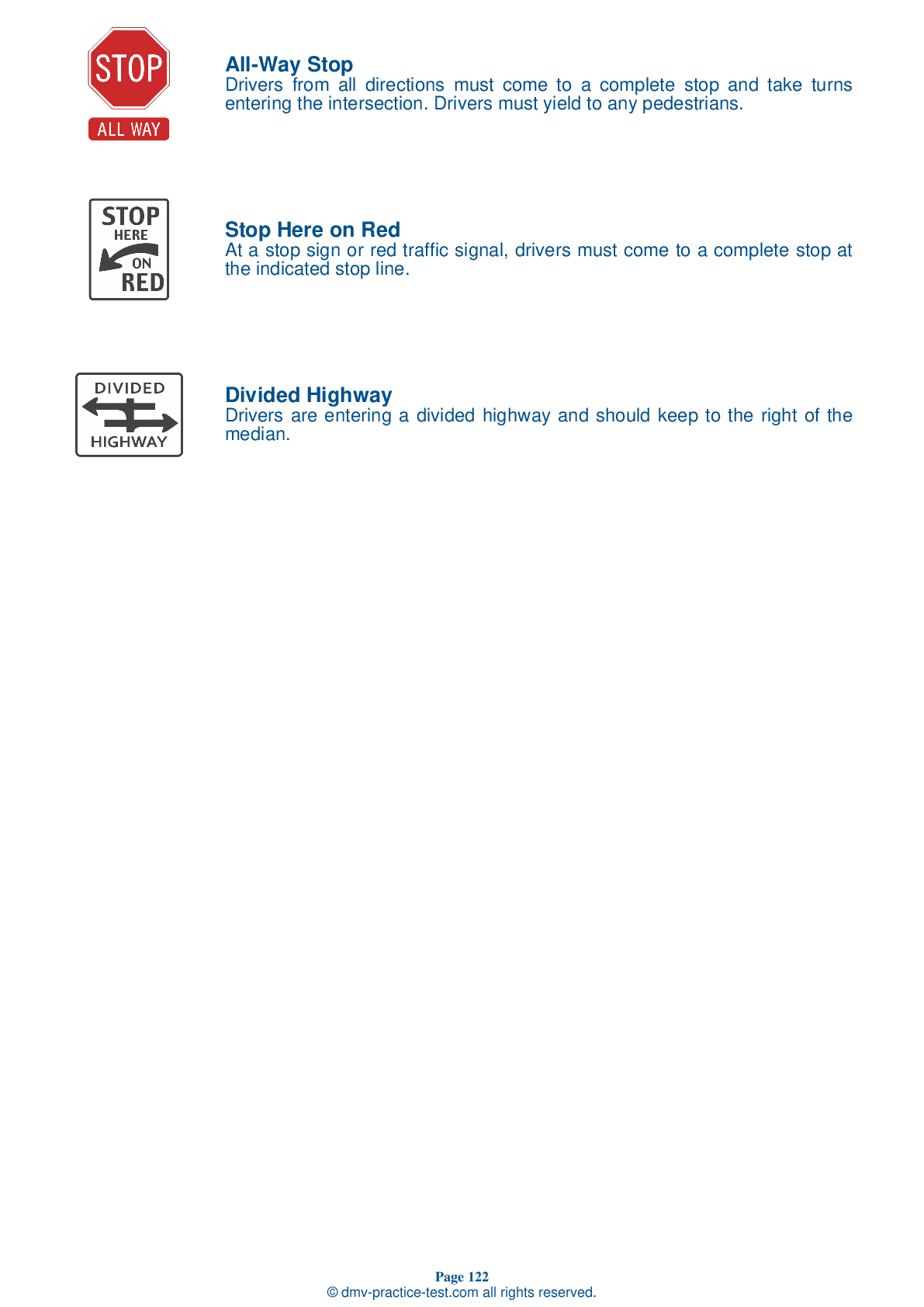Knowledge Test Class B #2
Class B Driving Test | Kansas 2025 #2 Page 3 of 7
Train for FREE online with our Kansas class B license test. The official exam test consists of several obligatory parts, with all of them checking your knowledge of different blocks of road rules. If you need to obtain a KS CDL class B permit in 2025, practice as much as possible. Free sample tests published on our website will help you check and improve your knowledge and boost your grades. Please bear in mind that CDL class B requirements may vary from state to state.
50
40
20
15 . Regarding winter driving, all of the following are true, except:
Use a gauge to verify that each tire has a safe tread depth.
When driving during the winter, it is particularly important that your tires have adequate tread. You need a tread depth of at least 4/32 of an inch in every major groove on the front tires, and at least 2/32 of an inch on the back tires. Check the tread depths by using a gauge.
16 . If your vehicle is hydroplaning, you should:
Turn the steering wheel as hard as possible.
If your vehicle begins to hydroplane, do not apply the brakes. Instead, release the accelerator and push in the clutch. This will slow down your vehicle and help it regain traction.
17 . When traveling down a downgrade, the speed of a vehicle will likely:
Match the speed of traffic.
On a downgrade, the force of gravity will cause a vehicle's speed to increase. When approaching a downgrade, choose to travel at a speed that will be safe for the size and weight of your vehicle.
18 . When stopping, the brake pedal:
Should be lifted up gradually.
When stopping, the brake pedal should be pushed down gradually. Control the pressure so your vehicle comes to a slow, safe stop.
19 . If an aggressive driver confronts you, you should not:
Try to get out of their way.
When confronted with an aggressive driver, your first priority should be to get out of their way. Do not provoke the driver by making eye contact, trying to race, or refusing to move out of your traffic lane. Additionally, ignore any gestures that are intended to provoke you.
20 . Which of the following is not a sign of a person being drowsy?
Yawning
Driving drowsy is dangerous and should always be avoided. Warning signs of drowsiness include frequent blinking, your eyes closing or going out of focus by themselves, frequent yawning, and drifting between lanes.
21 . When carrying a wide load, you should:
Drive on the shoulder.
Loads that are over-length, over-width, and/or overweight may require special permits. Such vehicles are usually only allowed to be driven at certain times.
2025 Kansas | Frequently Asked Questions
To acquire a CDL Hazmat endorsement in Kansas, you must first have a CDL license. Then, pass the Hazardous Materials Endorsement Knowledge Test. You'll also need to submit fingerprints for a TSA background check. Lastly, complete a Hazmat endorsement application at a Kansas DMV office. Keep in mind, there are fees associated with these processes.
Before obtaining a CDL Hazmat license, you must have a Commercial Driver's License (CDL). You need to be at least 21 years old, be a U.S. citizen or have legal status, and have a clean driving record. You must also pass the Hazardous Materials Endorsement Knowledge Test and successfully complete a TSA background check.
When applying for a CDL Hazmat endorsement, you need to provide your current CDL, proof of U.S. citizenship or legal status (like a birth certificate or green card), and proof of identity and Kansas residency. You'll also need to complete a Hazmat endorsement application and provide fingerprints for a TSA background check.
Yes, there is a dedicated written test for the CDL Hazmat endorsement. The Hazardous Materials Endorsement Knowledge Test covers topics like loading and unloading hazardous materials, bulk packaging marking, driving and parking rules, and emergency response procedures. Passing this test is a requirement for obtaining the endorsement.
The written test for the CDL Hazmat endorsement covers a variety of topics related to transporting hazardous materials. These include: identifying different types of hazardous materials, understanding shipping papers, placarding rules, safety procedures, loading and unloading hazardous materials, and emergency response procedures in case of a hazardous material incident.
Yes, there are extra charges associated with acquiring a CDL Hazmat endorsement. These include a fee for the knowledge test, a fee for the endorsement itself, and a fee for the TSA background check. The exact amounts can vary, so it's best to check with the Kansas Department of Revenue's Division of Vehicles for current fees.
Yes, obtaining a CDL Hazmat endorsement requires a federal background check and security threat assessment. This is done by the Transportation Security Administration (TSA). The process includes fingerprinting and checking for any criminal, immigration, or mental health issues that could pose a security risk. The applicant must also be a U.S. citizen or have legal status in the U.S.
Yes, specialized training is required for the CDL Hazmat endorsement. Applicants must pass a written test covering hazardous materials regulations and safety procedures. After passing the test, applicants must complete a TSA background check. It's not a separate certification, but it is an additional requirement to the general Commercial Driver's License.
No, you cannot legally transport hazardous materials without a valid CDL Hazmat endorsement in Kansas. This endorsement is required by federal law and ensures that drivers have the necessary knowledge and skills to safely transport these potentially dangerous materials. Violating this law could result in serious penalties.
Yes, you can add the Hazmat endorsement to your existing CDL license in Kansas. You don't need to apply for a new CDL license. However, you must pass a written Hazmat knowledge test and undergo a TSA security threat assessment before the endorsement is added to your license.



